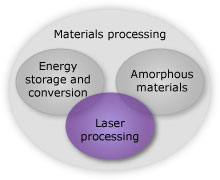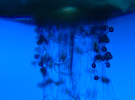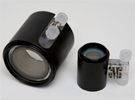Laser Processing
We study fundamental laser-material interactions for processing and imaging applications.
Key examples of our work in this area include the research and development of optical trap assisted direct-write nanopatterning (OTAN), blister-actuated laser induced forward transfer (LIFT), and the tunable acoustic gradient index of refraction (TAG) lens for high-speed varifocal imaging and materials processing.

Research highlights
Optical trap assisted nanopatterning

The OTAN technique, developed by our group, brings laser direct-write a step smaller. This probe-based near field technique uses a microlens that is optically trapped above the substrate to create arbitrary sub-wavelength features on a surface. The key features include easy parallelization and the ability to process rough substrates.
Laser-induced forward transfer

LIFT is a versatile direct-write technique enabling high-resolution printing from a variety of functional materials. Our research focuses on blister-actuated LIFT, where a polymer layer absorbs the laser and deforms plastically to initiate transfer. We investigate the fundamental transfer mechanisms through time-resolved imaging and CFD modeling, and explore potential avenues for optimization.
-
Tunable acoustic gradient index of refraction lens

The tunable acoustic gradient index of refraction lens (or TAG lens) is an adaptive optics device filled with a fluid and driven by an acoustic wave. The very fast refractive index change induced results in a lens with tunable focal length at kHz rates, with applications in imaging and beam shaping.
-
Laser Processing Review Papers
- M. Duocastella and C. B. Arnold, “Bessel and annular beams for materials processing,” Laser Photonics Rev. 6, 607–621 (2012) | Full text | View at publisher
